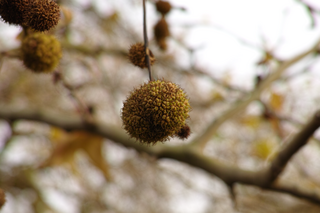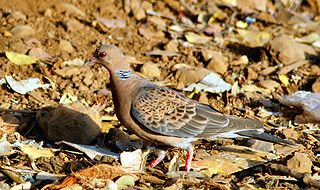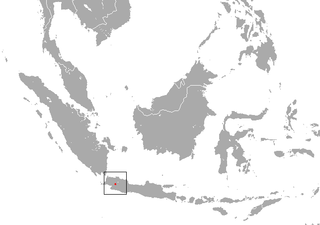
The lentil is an edible legume. It is a bushy annual plant known for its lens-shaped seeds. It is about 40 cm (16 in) tall, and the seeds grow in pods, usually with two seeds in each.

The subfamily Caprinae is part of the ruminant family Bovidae, and consists of mostly medium-sized bovids. A member of this subfamily is called a caprine. A member is also sometimes referred to as a goat-antelope, however, this term "goat-antelope" does not mean that these animals are true antelopes: a true antelope is a bovid with a cervid-like or antilocaprid-like morphology.

The green bee-eater, also known as little green bee-eater, is a near passerine bird in the bee-eater family. It is resident but prone to seasonal movements and is found widely distributed across sub-Saharan Africa from Senegal and the Gambia to Ethiopia, the Nile valley, western Arabia and Asia through India to Vietnam. They are mainly insect eaters and they are found in grassland, thin scrub and forest often quite far from water. Several regional plumage variations are known and several subspecies have been named.

The mouflon is a subspecies group of the wild sheep. Populations of O. orientalis can be partitioned into the mouflons and the urials. The mouflon is thought to be the ancestor for all modern domestic sheep breeds.

Platanus × acerifolia, the London plane, London planetree, or hybrid plane, is a tree in the genus Platanus. It is often known by the synonym Platanus × hispanica. It is usually thought to be a hybrid of Platanus orientalis and Platanus occidentalis. Some authorities think that it may be a cultivar of P. orientalis.

The oriental turtle dove or rufous turtle dove is a member of the bird family Columbidae. The species has a wide native distribution range from Europe, east across Asia to Japan. The populations show variations in the patterning of plumage and have been designated into at least six named subspecies. Populations in the higher latitudes tend to migrate south in winter while those closer to the tropics are sedentary. Vagrants have been recorded in North America. The species is predominantly granivorous and forages on the ground.

Platycladus is a distinct genus of evergreen coniferous tree in the cypress family Cupressaceae, containing only one species, Platycladus orientalis, also known as Chinese thuja, Oriental arborvitae, Chinese arborvitae, biota or oriental thuja. It is native to northeastern parts of eastern Asia and north Asia, but is also now naturalised as an introduced species elsewhere in Asia.

The urial, also known as the arkars or shapo, is a subspecies group of the wild sheep Ovis orientalis. Noticeable features are the reddish-brown long fur that fades during winter; males are characterized by a black ruff stretching from the neck to the chest and large horns. It is found in western central Asia. The other subspecies group of O. orientalis is the mouflon. The two groups have often been considered separate species.

Peter Forsskål, sometimes spelled Pehr Forsskål, Peter Forskaol, Petrus Forskål or Pehr Forsskåhl, was a Finnish explorer, orientalist, naturalist and an apostle of Carl Linnaeus.

Synaxarion or Synexarion is the name given in the Eastern Orthodox, Oriental Orthodox and Eastern Catholic Churches to a compilation of hagiographies corresponding roughly to the martyrology of the Roman Church.

The Oriental dollarbird is a bird of the roller family, so named because of the distinctive blue coin-shaped spots on its wings. It can be found from Australia to Japan and India.

Thenus orientalis is a species of slipper lobster from the Indian and Pacific oceans.

The black saw-wing, also known as the blue saw-wing or black rough-winged swallow, is a small passerine bird in the swallow family.

The Oriental shrew is a species of mammal in the family Soricidae. It is endemic to Indonesia. It is threatened by habitat loss.

The Javan ferret-badger is a mustelid endemic to Java and Bali, Indonesia. It is listed as Least Concern on the IUCN Red List and occurs from at least 260 to 2,230 m elevation in or close to forested areas.

The Sekukhune flat lizard is a species of lizard in the family Cordylidae. The species is endemic to South Africa. It has two subspecies.
The Eastern canonical reforms of Pope Pius XII were the several reforms of Oriental canon law and the Codex Iuris Canonici Orientalis, applying mainly to the Oriental Churches united with the Latin Church in communion with the Roman Pontiff. The Holy See's policy in this area had always two objectives, the pastoral care of approximately ten million Christians united with Rome and the creation of positive ecumenical signals to the two-hundred and fifty million Orthodox Christians outside the Church of Rome.

Trema orientalis is a species of flowering tree in the hemp family, Ulmaceae. It is known by many common names, including charcoal-tree, Indian charcoal-tree, pigeon wood, Oriental trema, and in Hawaii, where it has become naturalized, gunpowder tree, or nalita. It has a near universal distribution in tropical and warm temperate parts of the Old World, with a range extending from South Africa, through the Middle East, the Indian subcontinent and southern China to Southeast Asia and Australia.
Orientalis ecclesiae is an encyclical of Pope Pius XII. Its topic is St. Cyril, Patriarch of Alexandria.

The eastern carrion crow is a member of the crow family and a subspecies of the carrion crow. Differences from the nominate subspecies include a larger size, at a length about 500 millimetres (20 in), and more graduated outer tail feathers. The eastern carrion crow is found in Siberia from the Yenisei to Japan, south to Central Asia, Afghanistan, Eastern Iran, Kashmir, Tibet and northern China. They generally lay three to five eggs in trees or buildings. The eggs show no difference from the nominate subspecies.




















